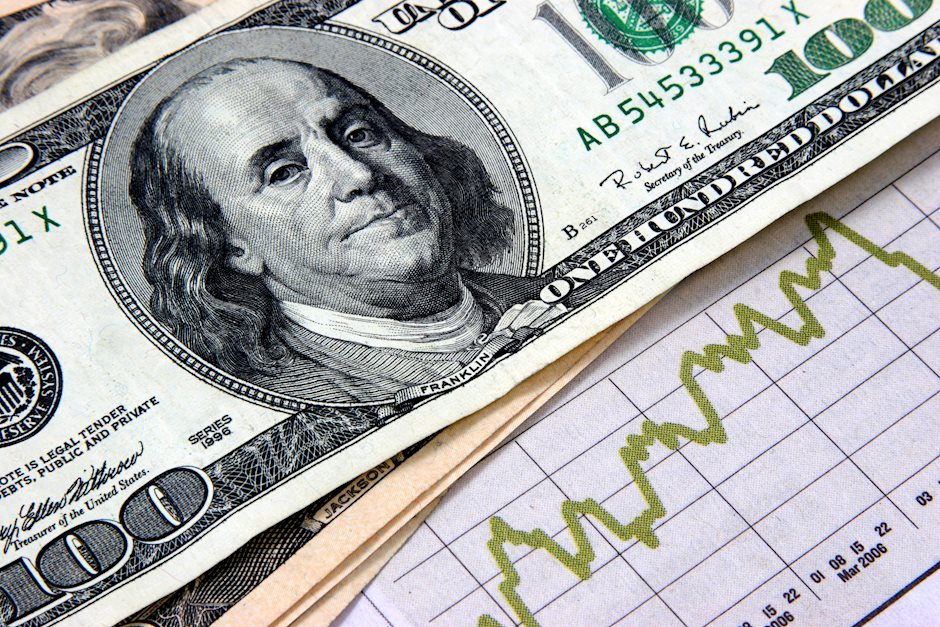US Dollar starts the week this its right foot, eyes on CPI
- DXY Index rose to 104.10 and consolidated above the 20-day SMA.
- Investors await the release of inflation data on Tuesday, ahead of the Fed’s decision on Wednesday.

The US Dollar (USD) is currently witnessing a strong uptrend, trading at 104.10, bolstered by rising yields and the cooling of dovish bets on the Federal Reserve (Fed) after the release of strong labor market figures last Friday. This week, the US will report November’s Consumer Price Index (CPI) figures, and the Fed meets on Wednesday.
Strong labor market signals and cooling inflation indicate inconsistency in the US economy. Despite these indicators, Federal Reserve officials are leaning toward a cautious stance, warning of further policy tightening. Tuesday’s inflation figures and fresh economic and interest rate projections on Wednesday will be key for markets to continue modeling their expectations of the bank's next decisions and will set the pace of US Dollar price dynamics.
Daily Market Movers: US Dollar holds gains, ahead of November’s CPI
- The US Dollar is trading with gains, boosted by rising yields ahead of an eventful week ahead.
- On Tuesday, investors will pay close attention to November’s headline and Core Consumer Price Index (CPI). The first one is expected to have decelerated, while the latter remains sticky at 4%.
- The yields on US bonds are on an upward trend, with rates of 4.75% for the 2-year yield, 4.26% for the 5-year yield, and 4.28% for the 10-year yield.
- According to the CME FedWatch Tool, market anticipation indicates no hike for Wednesday’s meeting. However, the markets are pricing in less easing for 2024.
Technical Analysis: DXY Index bulls step in and regain the 20-day SMA
On the daily chart, the Relative Strength Index (RSI) displays a positive slope in positive territory, reflecting an upward momentum for the Index. The Moving Average Convergence Divergence (MACD) illustratively endorses this bullish narrative, as rising green bars suggest that buying pressure is solidifying.
Considering the Index's positioning relative to the 20, 100 and 200-day Simple Moving Averages (SMAs), the situation offers further testament to this buyer-dominated environment. Despite being below the 100-day SMA, the index holding firm above both the 20 and 200-day SMA evinces the persistence of the buying force.
Support levels: 103.70 (20-day SMA), 103.50, 103.30.
Resistance levels: 104.50 (100-day SMA), 104.50, 104.70.
Fed FAQs
What does the Federal Reserve do, how does it impact the US Dollar?
Monetary policy in the US is shaped by the Federal Reserve (Fed). The Fed has two mandates: to achieve price stability and foster full employment. Its primary tool to achieve these goals is by adjusting interest rates.
When prices are rising too quickly and inflation is above the Fed’s 2% target, it raises interest rates, increasing borrowing costs throughout the economy. This results in a stronger US Dollar (USD) as it makes the US a more attractive place for international investors to park their money.
When inflation falls below 2% or the Unemployment Rate is too high, the Fed may lower interest rates to encourage borrowing, which weighs on the Greenback.
How often does the Fed hold monetary policy meetings?
The Federal Reserve (Fed) holds eight policy meetings a year, where the Federal Open Market Committee (FOMC) assesses economic conditions and makes monetary policy decisions.
The FOMC is attended by twelve Fed officials – the seven members of the Board of Governors, the president of the Federal Reserve Bank of New York, and four of the remaining eleven regional Reserve Bank presidents, who serve one-year terms on a rotating basis.
What is Quantitative Easing (QE) and how does it impact USD?
In extreme situations, the Federal Reserve may resort to a policy named Quantitative Easing (QE). QE is the process by which the Fed substantially increases the flow of credit in a stuck financial system.
It is a non-standard policy measure used during crises or when inflation is extremely low. It was the Fed’s weapon of choice during the Great Financial Crisis in 2008. It involves the Fed printing more Dollars and using them to buy high grade bonds from financial institutions. QE usually weakens the US Dollar.
What is Quantitative Tightening (QT) and how does it impact the US Dollar?
Quantitative tightening (QT) is the reverse process of QE, whereby the Federal Reserve stops buying bonds from financial institutions and does not reinvest the principal from the bonds it holds maturing, to purchase new bonds. It is usually positive for the value of the US Dollar.
Author

Patricio Martín
FXStreet
Patricio is an economist from Argentina passionate about global finance and understanding the daily movements of the markets.

















